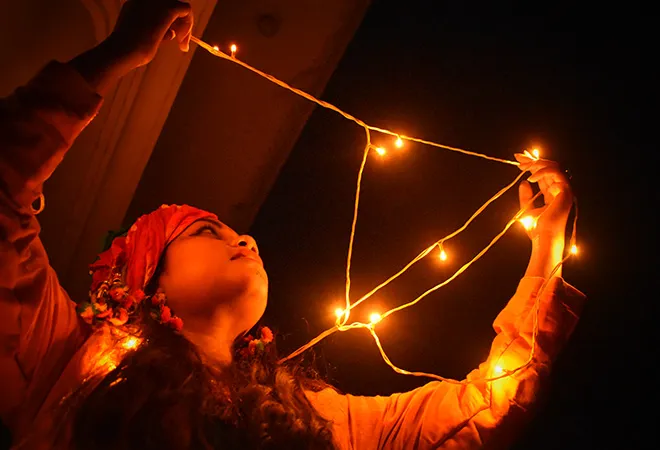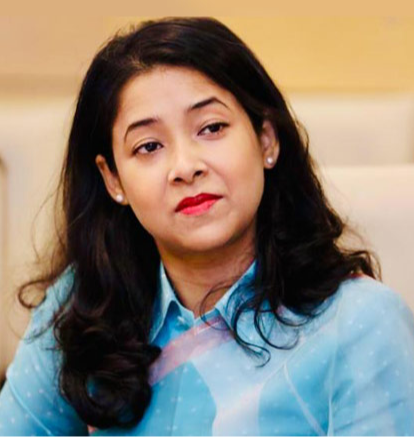
India is making great strides towards Sustainable Development Goal 7 of achieving universal energy access by 2030. From pioneering one of the world’s largest clean energy programme aimed at achieving 175GW of clean energy capacity by 2022, to ensuring complete household electrification through Pradhan Mantri Sahaj Bijli Har Ghar Yojana (Saubhagya), India’s energy sector is undergoing significant transformation. However, a meaningful realisation of energy access that is equitable and sustainable remains a critical challenge. As new regions in India gain access to energy, a recent study published in the journal Nature Sustainability highlights that men in India’s households still dominate its use.
Energy policies and programmes have a differential impact on women and men due to their varying roles at home, workplace and society. In India, women spent up to five hours a day in collecting firewood and cooking, that significantly impacts their health and limits their opportunity for education, employment and economic advancement. According to a World Health Organization report, the use of traditional and unclean fuel sources such as biomass cause severe health and respiratory diseases, killing 500,000 people in India every year. For developing countries such as India, mainstreaming gender considerations in energy policies and programmes is therefore imperative to ensure women’s health, economic empowerment and well-being.
While some of India’s key energy policies such as the draft National Energy Policy (NEP) and Pradhan Mantri Ujjwala Yojana have attempted to fill the gender gap by recognising the linkages of women to energy access, yet their objectives do not explicitly relate women with the energy supply chain or modern and productive forms of energy. The focus of these flagship programmes so far has remained limited to benefitting women through fuel substitution of energy sources like firewood, dung cake, kerosene etc. to cleaner sources like LPGs and electric cook stoves. Moreover, associating women strongly with their roles in cooking reflect that India’s policies and programmes are still informed by historical discourses on gender and energy, that identifies women primarily with cooking, reproductive and care giving roles.
Besides cooking, Indian women make a significant contribution as micro- entrepreneurs. In rural areas, where the Distribution Companies (DISCOMs) are plagued with high distribution and transmission losses and ageing grid infrastructures, women play a substantial role in the decentralised electricity sector by assembling circuit boards, creating solar lanterns and marketing them in the villages. Traditionally, women are also actively engaged in post-harvest activities associated with processing, preservation and packaging of farm produce.
Ensuring a sustainable flow of energy in rural communities could result in a 9 per cent increase in female employment, and 23 per cent increase in the probability of rural women working outside the home. According to a study by the McKinsey Global Institute, empowering women to participate in India’s economy on an equal basis with men would add $3 trillion to the nation’s economy by 2025. Furthermore, coupling the energy plans with necessary resource support such as access to efficient appliances, financing, and livelihood opportunities would unlock potential for greater socio-economic benefits.
A key barrier towards achieving gender inclusion in India’s energy sector is because the design of the policies and programmes are largely supply driven and not planned based on demand. The provisions reflect an implicit assumption that the benefits will trickle down to all people irrespective of economic, social or cultural barriers, including those faced by women and the disadvantaged. Moreover, there is a lack of significant empirical evidence and studies documenting the merit of gender inclusion, ways of translating gender elements into practice and cases suggesting the outcome of such initiatives.
Adapting a more multi-dimensional framework for measuring energy access that could capture gender disaggregated data and indicators would push for a more inclusive and sustainable implementation of India’s energy policies.
A meaningful and effective transition in India’s energy sector could only be attained when narratives around energy access goes beyond increased generation capacity and number of connections, to address key concerns related to the quality, availability, and equity of such energy supply.
The views expressed above belong to the author(s). ORF research and analyses now available on Telegram! Click here to access our curated content — blogs, longforms and interviews.




 PREV
PREV


